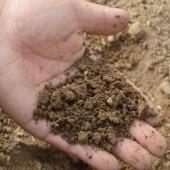Plastic vs clay pots, what to choose?
-
AuthorPosts
-
November 10, 2020 at 11:18 am Reply
I’m minimizing my use of plastics but when it comes to pots, there’s no doubt about how convenient the plastic ones are. Nonethless, I’m still considering using clay pots. If the advantages are plenty, I’ll jump into it right away. Could you help me decide fully? Site the positive aspects of using “heavy” clay pots please.
November 11, 2020 at 12:35 pm ReplyIt is not going to be a cut and dried selection. Each has its own advantages and disadvantages and must be selected according to things such as your climate and what kind of plants you are going to put in them and where (indoors/outdoors).
Clay pots allow water and air to move in and out of soil, helping reduce injury to plants from drowning in wet soil. Useful when the plant should not be in soggy soils and you have lots of rain or when you tend to overwater. They also help to insulate the soil and protect plants from rapid temperature changes. Under some conditions, they can crack. If you have a large plant in clay pots, consider always having an unused clay pot handy for that time when the used pot cracks or breaks and the stores are closed. It is also difficult to add more water drainage holes if you need them (the pots may crack) if you try to drill new holes).
Plastic pots allow soil to retain more moisture so that you can water less frequently. They are also lighter than clay pots, making it easier to relocate plants. Under some conditions, they can become brittle. They are easier to modify when you need more drainage holes.
Although plastic pots are initially lighter, if they are large and get filled with lots of potting mix, they will be difficult to move albeit not as much as clay pots. As a result, I always put rollers on both types of pots when they get to be large enough. Clay pots -large ones- are more difficult to move.
Aesthetics: clay pots can sometimes develop salty deposits that must be cleaned with some regularity. Plastic potscan come in more colors but sunlight may bleach them.
What plants: Clay pots are best used for plants that prefer soil that is dry and well-drained, such as succulents and cacti (I have seen people using both pots for plumerias); outdoor plants that need protection from extreme daytime heat or nighttime cold (but they crack if it gets “too” cold); houseplants or outdoor plants that you will not be moving often; plants with shallow rot systems so the extra weight will stabilize the pot when windy.
Plants in plastic pots can be transplanted easier. They are lighter, easier to clean, break less and come in more colors. Water will have more difficulty escaping from plastic pots so you may need to water less often. On the other hand, you may end up overwatering the plants and having root rot issues if you do not monitor the soil moisture better. They protect your plant’s root less from cold night-time temperatures or hot day-time temperatures. Some types of plastics should not be used with herbs, vegetables and fruit plants as they can be toxic so ask if they are “food safe” when purchasing. Plastic pots are great when you have to do a lot of misting or are germinating seeds or if you have to move the plant indoors/outdoors a lot.
November 11, 2020 at 3:05 pm ReplyWow! Very helpful answer! Thanks for sharing, @luis_pr ! 👍👍👍
Nature & Garden moderator.
Message me if you have any questions, I’ll be glad to help out!
“Winter reveals the strength inside… of those who dare go out!”
November 11, 2020 at 5:57 pm ReplyThanks. I have broken quite a few of clay pots and reused a lot of of those plastic pots as well when the poor plants croaked. :o(
November 12, 2020 at 8:58 am ReplyHehe I broke my own fair share of clay pots, too. Definitely heavier when watered. I noticed on my balcony they wouldn’t tip over as easily as plants in the plastic ones on windy days. But when they do tip, half the time they crack. 😕
-
AuthorPosts
- You must log in to post and answer topics. Sign up / Sign in


